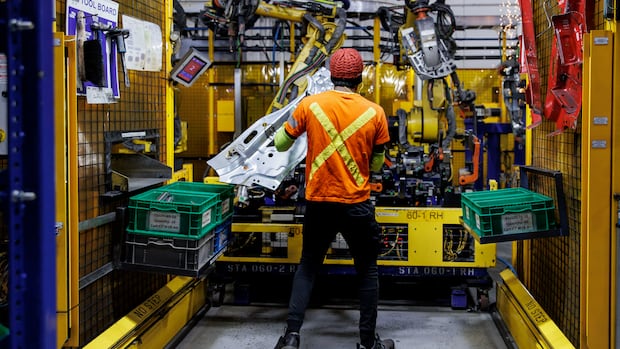Before U.S. President Donald Trump terminated trade negotiations with Canada late Thursday night, premiers were clashing over which tariff-beleaguered industries should be prioritized.With Ontario’s auto industry pitted against the canola industry of the prairies, and B.C. raising concerns that the lumber industry is not getting the attention it deserves, Team Canada was looking increasingly splintered.Trump’s latest actions have resulted in a more united front across provincial borders. But as tariffs remain, so do those underlying tensions.Here’s a breakdown of the industries most under threat by tariffs in each province, and what premiers are saying as Canada tries to negotiate new trade relationships.British ColumbiaB.C. Premier David Eby made headlines earlier this month when he suggested the federal government is not prioritizing the lumber industry.“Steelworkers in Ontario, when their jobs are in trouble … it’s treated as a national emergency, and rightly so,” Eby said at an Oct. 14 news conference. “What we’re asking for today is … that same sense of emergency is shared for the forest sector in this country.” Eby made those comments after the Trump administration increased timber and lumber tariffs by 10 percentage points on top of the existing 35 per cent tariff.Although B.C.’s largest export to the United States is energy and raw minerals, wood products are a “very close second,” according to Trevor Tombe, an economics professor at the University of Calgary.The forestry industry supports over 100,000 jobs in B.C., according to the B.C. Lumber Trade Council.B.C. Premier David Eby says the lumber industry must not be forgotten during trade negotiations. (CBC)AlbertaOil and gas is by far Alberta’s largest industry, with petroleum accounting for 81 per cent of Albertan exports to the U.S. last year. So far, the industry has escaped many of the harshest direct tariffs from the U.S., Tombe said, but it’s still impacted by changes in American trade policy. “U.S. trade policy to other countries around the world has been quite considerable, and it has resulted in slower rates of economic growth,” he said. “What that does is lower demand for energy, and that lowers oil prices.”Non-renewable resource revenue was down $1.4 billion from what had been projected in the Alberta budget, mainly thanks to lower crude oil prices coupled with a stronger Canadian dollar, according to a provincial fiscal update from the first quarter of 2025.SaskatchewanChinese tariffs on Canadian agricultural products have caused concern about impacts on the Saskatchewan economy. China placed a 100 per cent tariff on canola oil and meal in March and a 75.8 per cent tariff on canola seed in August. The country was Saskatchewan’s second-largest export partner in 2024, and of the $5-billion worth of Canadian canola, oil, meal and seed exports to China, the province accounts for half. Chinese Ambassador Wang Di told CTV News earlier this month that China would lift canola tariffs if Canada removed its 100 per cent tariff on Chinese electric vehicles. Ottawa imposed the tariff in 2024, mirroring a move by the U.S. a month earlier. After the ambassador’s comments, Premier Scott Moe posted on X, asking Ottawa “to get this deal done on behalf of 200K Canadian workers.” China has also placed a 25 per cent tariff on certain pork products, impacting Saskatchewan’s third-largest agricultural sector. The pork industry accounts for 18 per cent of the province’s total livestock sales, according to the Saskatchewan Pork Development Board. China placed tariffs on Canadian canola in response to Canadian tariffs on Chinese electric vehicles. (Jeff McIntosh/The Canadian Press)ManitobaPremier Wab Kinew also said his province is facing economic pressure from the Chinese tariffs. “The retaliatory tariffs imposed by China have already caused steep price declines for canola, threatening the livelihoods of thousands of Manitoba farmers and the stability of rural communities,” Kinew wrote in an open letter on Oct. 11, urging Prime Minister Mark Carney to eliminate Canada’s electric vehicle tariff.Canola was Manitoba’s top crop in 2024 and generated just under $2 billion for the province. Kinew also pointed to losses in the pork industry, saying a large producer had seen a “$19-million negative impact on an annualized basis.”OntarioThe province’s $11.6-billion vehicle manufacturing industry is facing threats from south of the border, as it is both deeply integrated with the U.S. and the target of tariffs by the Trump administration. Last week, Trump announced 25 per cent tariffs on imported medium- and heavy-duty trucks starting Nov. 1. After Trump’s tariffs on electric trucks, General Motors said it would be ending production of its electric van in the province. The week before, Stellantis moved production of one of its Jeep models from Ontario to Illinois.Premier Doug Ford publicly disagreed with both Moe and Kinew about removing the electric vehicle tariff.“There’s no damn way we should drop tariffs on China,” Ford said while speaking to the Empire Club of Canada on Oct. 14.“Scott [Moe] called me up and said, ‘Hey, I’ve got to protect my province.’ I get it,” he said. “I get why Wab Kinew and Scott are saying, ‘Drop the tariffs,’ but I have to do the same thing.” Ontario has dedicated billions of dollars in government subsidies, tax credits and investments to promote electric vehicle manufacturing in the province. Tariffs were imposed with concern that cheaper Chinese technology might displace domestic manufacturing, according to an analysis by TD Economics.Ontario Premier Doug Ford opposes dropping the tariffs on Chinese EVs. (Evan Mitsui/CBC)QuebecManufacturing is also a major industry in Quebec, accounting for 80 per cent of the province’s exports.Quebec and Ontario will be most impacted by U.S. tariffs, a September Scotiabank analysis found.Aluminum is the province’s second-largest sector after aerospace, making up 10 per cent of its export market. Quebec and Ontario’s GDPs are expected to drop by 1.4 per cent by the end of 2026, the most significant decrease in Canada, the report said. New BrunswickNew Brunswick’s lumber industry contributes approximately $15 billion annually to the province’s GDP.In an interview with CBC News, Premier Susan Holt said increased U.S. tariffs on lumber pose a “real challenge” to her province and will have a “negative impact” on residents’ jobs. Prince Edward IslandChina also levied tariffs on Canadian seafood imports in March, and reports show they are impacting Prince Edward Island’s $377-million seafood industry. Hundreds of temporary foreign workers on the island were laid off or had their hours cut, with the P.E.I. Seafood Processors Association saying the tariffs are a contributing factor to slowdowns at processing plants in the province. China has also placed tariffs on Canadian seafood. (Jane Robertson/CBC)Nova ScotiaThe seafood industry in Nova Scotia accounts for a sizable chunk of the province’s exports, totaling $1.5 billion in 2024. China received more than 10 per cent of the value of Nova Scotia’s exports, the second most of any country. Newfoundland and LabradorThe most easterly province also relies heavily on exporting seafood to China. Approximately 9.1 per cent of Newfoundland and Labrador’s exports are subject to tariffs in China., according to an RBC study.
Which industry in each province is most threatened by tariffs?











